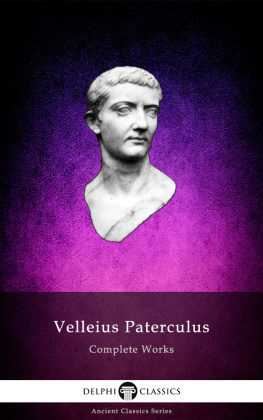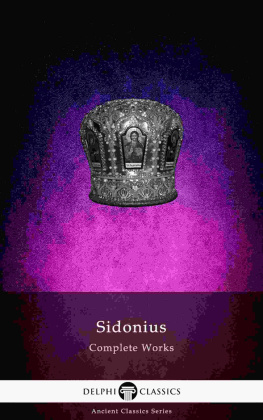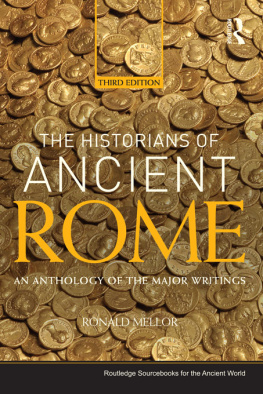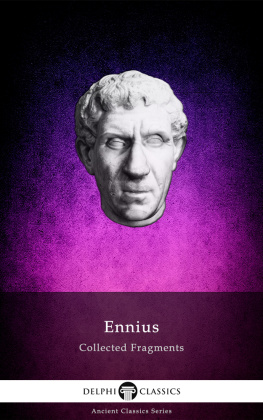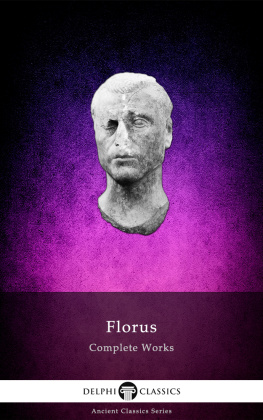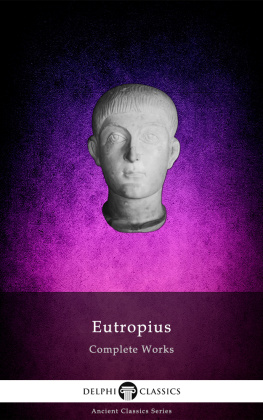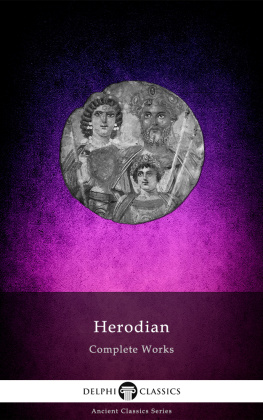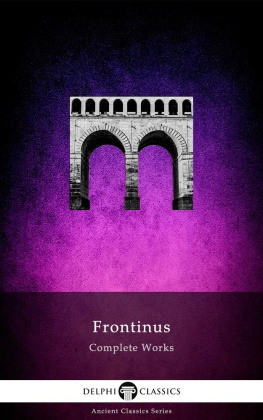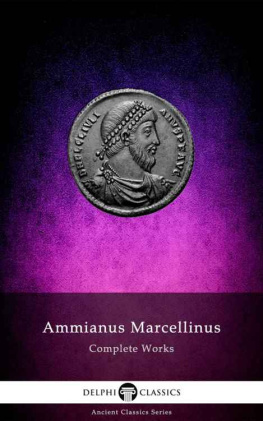
The Complete Works of
VELLEIUS PATERCULUS
(c. 19 BCc. AD 31)

Contents

Delphi Classics 2019
Version 1

Browse Ancient Classics







The Complete Works of
VELLEIUS PATERCULUS

By Delphi Classics, 2019
COPYRIGHT
Complete Works of Velleius Paterculus
First published in the United Kingdom in 2019 by Delphi Classics.
Delphi Classics, 2019.
All rights reserved. No part of this publication may be reproduced, stored in a retrieval system, or transmitted, in any form or by any means, without the prior permission in writing of the publisher, nor be otherwise circulated in any form other than that in which it is published.
ISBN: 978 1 91348 700 3
Delphi Classics
is an imprint of
Delphi Publishing Ltd
Hastings, East Sussex
United Kingdom
Contact: sales@delphiclassics.com

www.delphiclassics.com
The Translations

Roman remains at Aeclanum, an ancient town of Samnium, southern Italy, on the Via Appia, near modern day Mirabella Eclano little information survives regarding the life of Paterculus, who may have been born in c. 19 BC in Aeclanum, then a major centre of Hirpinia, into a distinguished Campanian family.

View of the surviving baths at Aeclanum
Compendium of Roman History (1852 translation)

Translated by John Selby Watson
The Roman historian Velleius Paterculus lived during the reigns of Augustus and Tiberius, serving as a military tribune in Thrace, Macedonia, Greece and Asia Minor, and later as a cavalry officer and legatus in Germany and Pannonia. Paterculus was quaestor in AD 7 and praetor in 15. Written in a highly rhetorical style, his Compendium of Roman History is a summary of Roman history from the mythical fall of Troy to AD 29. As Paterculus approached his own times, he becomes much fuller in his treatment of history, especially dealing with the years between the death of Julius Caesar in 44 BC and Augustus in 14.
Consisting of two books dedicated to M. Vinicius, the history covers the period from the dispersion of the Greeks after the siege of Troy down to the death of Livia (AD 29). The first book concerns events up until the destruction of Carthage in 146 BC, with several sections now lost, including the original beginning. The second book is treated in much greater detail. Although Paterculus does not display real historical insight, he is generally trustworthy in his statements of individual facts, serving as a courtly annalist, rather than an actual historian. When dealing with Julius Caesar, Augustus and particularly his patron Tiberius, Paterculus lavishes high praise, even flattery. Nonetheless, his portrait of Tiberius is a useful corrective to the sensationalist attacks of Tacitus, as is his treatment of Livia. The repetitions, redundancies and slovenliness of expression may be partly due to the haste with which the text was written, as repeatedly mentioned by the author. Notable characteristics of Silver Age literature abound in the text, with examples including inflated rhetoric, the straining after effect by means of hyperbole, antithesis and epigram. Paterculus chief authorities were Catos Origines , the Annales of Quintus Hortensius, Pompeius Trogus, Cornelius Nepos and the work of Livy.

Early sixteenth century publication, edited by Beatus Rhenanus

Bust of Tiberius, Romisch-Germanisches Museum, Cologne Tiberius (42 BC-37 AD) was the second Roman emperor, reigning from 14 AD to 37 AD, succeeding Augustus. Tiberius was Paterculus patron and the historian flatters him greatly in his Compendium of Roman History.
CONTENTS

Augustus of Prima Porta, first century the first Roman emperor is a key figure of Paterculus Compendium of Roman History.

A bust of Augustus, wearing the Civic Crown. Glyptothek, Munich
BOOK I.
I. Cities founded by the Greeks on their return from Troy; acts of Orestes; arrival of Tyrrhenus in Italy II. Return of the Heraclid; death of Codrus; founding of Megara, Gades, and Utica. III. Of the Achans, Pelasgi, Thessalians, and the settlement of Corinth IV. Chalcis, Magnesia, Cum, Naples, and many other cities, founded V. Age and character of Homer VI. Of the Assyrian empire, Lycurgus, and the origin of Carthage VII. Of Hesiod, and the building of Capua and Nola VIII. The Olympic games; the founding of Rome IX. The second Macedonian war X. Of Antiochus the Great, and milius Paulus XI. Pseudo-Philippus; Metellus Macedonicus XII. Destruction of Corinth and Carthage XIII. Death of Cato; characters of Mummius and Scipio Africanus XIV-XV. Establishment of Roman colonies XVI-XVII. Considerations why many eminent men, in the several arts, arise at the same time XVIII. Commencement of similar observations on cities.
I
gisthus, who bore a hereditary hatred towards him, and by the malice of his wife, he was murdered. gisthus held the throne for seven years; when Orestes, in concert with his sister Electra, a woman of masculine courage, and sharer in all his designs, slew both gisthus and his own mother. That his deed was approved by the gods, was apparent from the length of his life and the prosperity of his reign; for he lived ninety years and reigned seventy. He also revenged himself on Pyrrhus, son of Achilles, with similar spirit; for Pyrrhus having supplanted him by marrying Hermione, the daughter of Menelaus and Helen, who had been betrothed to Orestes, Orestes slew him at Delphi.
Next page
